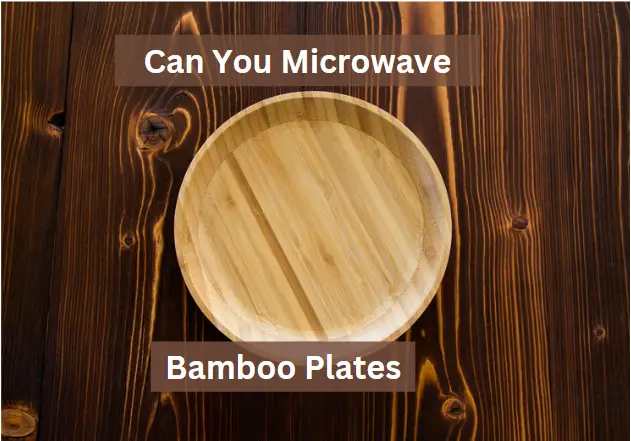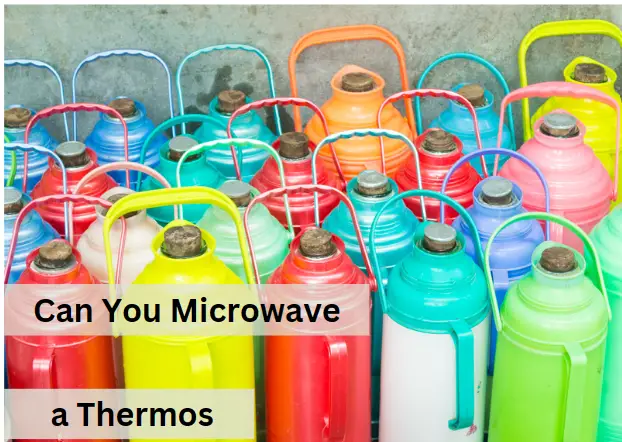Can You Microwave Bamboo Plates? (Safer Alternatives)
So, you’ve got these awesomely beautiful bamboo plates, but can you microwave them? Well, folks, I can tell you right now that the answer is a resounding no!
Don’t put those natural beauties in the microwave or else – be warned – you could end up with more than just an irritated tummy. Bamboo is organic and porous which means it can’t handle the heat. It can start to warp, crack and even pop like firecrackers when microwaved, can you imagine your kitchen suddenly looking like a fireworks display?! Not only can this be messy, but it can also create potential hazards throughout your home.
So, let’s leave the cooking of our delicious meals to appliances that specialize in those tasks and keep those gorgeous bamboo plates for display or serving only!
Are Bamboo Plates Microwave Safe?
No, we do not recommend microwaving your bamboo plates.
If you microwave a bamboo plate, it can lead to warping, cracking, darkening, or even burning of the plate. This is because bamboo plates are made of natural materials that cannot withstand the high heat of microwaves. The binding agent used to hold the bamboo together, called melamine-formaldehyde resin, can also leach into your food when heated in the microwave.
It is important to note that not all manufacturers consider bamboo plates to be microwave safe. Therefore, it is best to avoid using them in the microwave and opt for alternative options such as glass or ceramic plates.
Are Bamboo Palm Leaf Plates Microwave Safe?
Bamboo leaf plates are becoming increasingly popular as an eco-friendly alternative to disposable paper and plastic plates. However, it’s important to note that bamboo leaf plates and bamboo plates are not the same thing. While bamboo plates are made from the actual bamboo plant, bamboo leaf plates are made from fallen leaves of the plant. This difference in material composition is what makes bamboo leaf plates heat safe and not bamboo.
Bamboo leaf plates have a natural wax coating that makes them resistant to heat and liquids, making them ideal for serving hot or cold food items. Additionally, they are sturdy enough to hold heavier foods without bending or breaking, making them a great choice for outdoor events, picnics, and parties.
On the other hand, traditional bamboo plates may not be heat safe as they can easily warp or crack when exposed to high temperatures. They also tend to absorb liquids which can make them unsuitable for serving certain types of food.
In summary, if you’re looking for an eco-friendly option that is both heat safe and sturdy enough to hold heavier foods without breaking or bending, then bamboo leaf plates are a great choice.
Benefits of Using Bamboo Plates
Bamboo plates are becoming increasingly popular as a sustainable and eco-friendly alternative to traditional disposable plates. Not only are they better for the environment, but they also offer a range of benefits for consumers. Here are some of the top benefits of using bamboo plates:
- Eco-Friendly: Bamboo is a highly renewable resource that grows quickly and doesn’t require pesticides or fertilizers to thrive. This makes it an excellent choice for those who want to reduce their environmental impact.
- Durable: Bamboo plates are strong and durable, making them ideal for outdoor events, picnics, and camping trips. They can withstand high temperatures and won’t easily break or crack like traditional disposable plates.
- Stylish: Bamboo plates have a natural, rustic look that adds a touch of elegance to any table setting. They come in a variety of shapes and sizes, so you can choose the perfect set to match your decor.
- Safe: Unlike plastic plates, bamboo plates are free from harmful chemicals like BPA and phthalates. This makes them safe for both adults and children to use.
- Easy to Clean: Bamboo plates are easy to clean and can be washed in the dishwasher or by hand with soap and water. They don’t absorb flavors or odors like plastic or paper plates do.
Overall, bamboo plates offer a sustainable, stylish, and safe alternative to traditional disposable plates. By choosing bamboo over plastic or paper products, you can help reduce your environmental impact while enjoying all the benefits that bamboo has to offer.
4 Alternatives to Bamboo Plates in the Microwave
If you’re looking for eco-friendly dinnerware options that can be used in the microwave, bamboo plates may not be the best choice. While bamboo is a sustainable material, it’s not recommended to use it in the microwave due to the risk of warping, cracking, and leaching of harmful chemicals. But don’t worry, there are plenty of other alternatives to choose from! Here are five options:
- Glass Plates: Glass plates are a great alternative to bamboo plates as they are microwave safe and easy to clean. They come in various sizes and designs, making them perfect for any occasion.
- Ceramic Plates: Ceramic plates are another great option that can be used in the microwave. They are durable and come in many different colors and patterns.
- Silicone Plates: Silicone plates are a newer option on the market but have become increasingly popular due to their flexibility and durability. They can also be used in the microwave and dishwasher.
- Paper Plates: If you’re looking for a disposable option that is still eco-friendly, paper plates made from recycled materials are a good choice. Just make sure they’re labeled as microwave-safe before using them!
No matter which alternative you choose, remember to always check if it’s safe for use in the microwave before heating up your food.
Are Bamboo Plates Safe for Serving Hot Food?
If you’re looking for an eco-friendly and non-toxic alternative to plastic plates, bamboo plates might be a great option. However, it’s important to consider whether they are safe for serving hot food. According to the Science Direct, acidic foods and high heat can cause melamine to leach into your food from bamboo dishes. Melamine is a chemical that can be harmful if ingested in large amounts.
That being said, there are some bamboo plates that are microwave-safe and can handle hot food without leaching chemicals. It’s important to look for plates that are specifically labeled as heat-resistant and microwave-safe if you plan on using them for hot meals.
Another thing to keep in mind is that some bamboo products may contain melamine-formaldehyde resin (MFH), which can release toxic substances into your food when exposed to higher temperatures. To avoid this, make sure you choose bamboo plates that are made from 100% natural materials.
Overall, while bamboo plates can be a great eco-friendly option, it’s important to do your research and choose carefully if you plan on using them for serving hot food.
Frequently Asked Questions
Can You Microwave Bamboo Cups?
Most bamboo cups are not recommended for use in the microwave because they can contain materials like melamine and formaldehyde that can leach into your drink when exposed to high temperatures. These chemicals can be harmful to your health and should be avoided whenever possible. Additionally, bamboo cups are often coated with a layer of plastic or wax to help make them more durable, which can melt or warp in the microwave. It’s always important to read manufacturer instructions carefully before using any product and take necessary precautions to ensure your safety.
Can Bamboo Plates go in the Dishwasher?
If you’re wondering whether or not bamboo plates can go in the dishwasher, the answer is not a straightforward one. Some sources say that bamboo tableware is dishwasher safe, while others advise against it.
According to Cleandezign, bamboo bowls are dishwasher safe because they are more resilient and sturdier than other types of bamboo tableware. They can withstand high temperatures and hold up for daily use. However, other sources like Sustainabilitynook and Bamboohomedecor caution against putting bamboo plates, cups, bowls, and other tableware in the dishwasher because the heat and harsh detergents used in dishwashers could ruin their surface or reduce their lifespan.
If you do decide to put your bamboo plates in the dishwasher, make sure they are labeled as dishwasher safe. We advise against using high heat settings and recommends placing them on the top rack of the dishwasher to avoid direct exposure to high temperatures.
Ultimately, hand-washing your bamboo plates is the safest option if you want to ensure their longevity. Bamboo is naturally antibacterial, so washing them by hand with warm water and soap should be sufficient.








